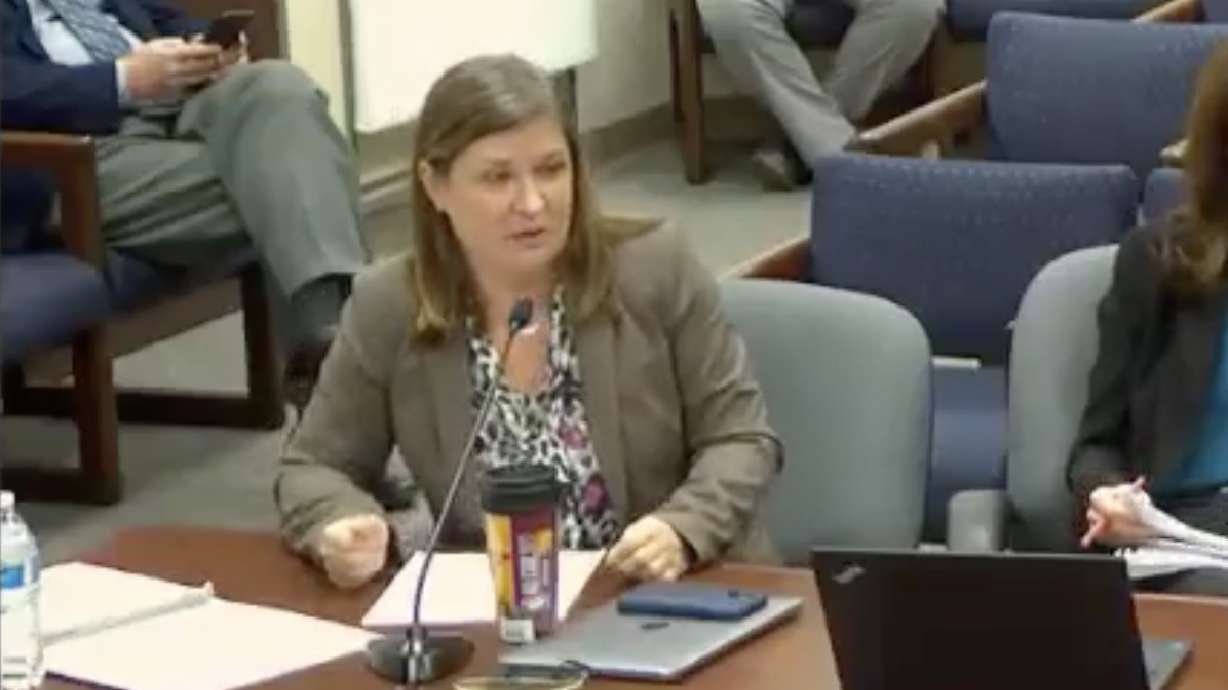Estimated read time: 4-5 minutes
This archived news story is available only for your personal, non-commercial use. Information in the story may be outdated or superseded by additional information. Reading or replaying the story in its archived form does not constitute a republication of the story.
SOUTH SALT LAKE — Utah is nearing the two-year anniversary of economic shutdowns imposed as COVID-19 first made its way into the state.
And as the state's most populated county slowly returns to life after the pandemic, Salt Lake County Mayor Jenny Wilson has ideas on how to spend federal money directed to the county for its recovery.
Wilson, this week, outlined how she wants to use over $90 million of $112 million scheduled to be sent to the county in July, as a part of the second wave of American Rescue Plan Act funds. The county also received $112 million last year; it has through the end of 2024 to decide on where to spend all the money.
Her plan would direct about $58.4 million in American Rescue Plan Act funds toward projects that address housing, economic development, environment, health/human services and criminal justice, as well as another $32.9 million to deferred maintenance in the county.
"We will be following the need and the mandate that was provided by the federal government to return prosperity to communities throughout and to also address the health demands presented by COVID," she said during a presentation to the Salt Lake County Council.
"That's a sizable amount, but when you look at the broad nature of what we do, it isn't going to be the extent of all ARPA funds available to us," Wilson added. "We have some time. It just represents the projects that are priorities."
The mayor explained that since Salt Lake County is in "a pretty good position" overall, two years after the shutdowns, it has a "generational opportunity" to put the federal money toward bigger projects.
The county received about 300 project proposals that officials whittled down to ideas that fit both the perimeters set by the federal government and were also ready to be started.
Housing projects account for $27.5 million, which is over half of the proposed American Rescue Plan Act spending. Wilson said funding affordable housing is the "single most impactful step" the county can take to improve the health and economic outcomes of its residents.
About $20 million would go toward a county housing trust fund, providing 1,200 total affordable housing units for qualifying households. Another $6 million would go toward a project that the county and state are working on to provide 200 units to people with high medical service needs related to homelessness, such as people recovering after surgeries.
The final $1.5 million would go toward a project that expands the Green & Healthy Homes Project to help about 150 low-income families in the county. All of those projects would be funded this year.
As for non-housing proposals, Wilson recommends about $14 million over the span of the next three years for projects that expand worker opportunities related to intergenerational poverty and diversity, including $10 million for the Workforce Inclusion and Successful Employment program.
Her proposal would direct a total of almost $6.6 million over the next three years to the county health department's recently-developed Health Equity Bureau, for a program that creates a community health worker service model.
Another $2.1 million would go toward a water conservation partnership by 2024. The water conservation proposal, Wilson, said would help reduce water consumption by 11% over the next nine years. The county's parks and recreation facilities would get another nearly $3.5 million to overhaul irrigation systems, while another $2 million would go toward efficient water landscaping throughout the county.
As for the deferred capital maintenance, about $12.3 million would go toward flood control in the county by 2024.
While Wilson said it may feel odd spending money on flood-related projects in the middle of a drought, she said the county's flooding preparation systems are "underfunded" and the county is always at risk for the same types of flash floods that ravaged other parts of the state last year.
"We cannot afford to have our canals fail," she explained. "Think about the private property rights, the impact there, the damage, the impact on the community. … We need to invest to avoid that."
Some of the plans would also open up new trail opportunities, the mayor added.
Meanwhile, over $7.8 million would go toward remodeling the Sunday Anderson and Kearns senior centers this year.
The recommendations also include nearly $10 million for improvements to Salt Lake County Sheriff's Office facilities and $3 million for security upgrades at the District Attorney Building over the next three years. The plan calls on funds to address caseload backlogs within the Legal Defender's Office, as well.
Members of the Salt Lake County Council will have the final say on how the money is spent. Similar proposals are expected to be presented to the council over the next two years as the county looks to use the $224 million allotted, barring changes to the funding in the future.
The county must spend all of the money by the end of 2026.









